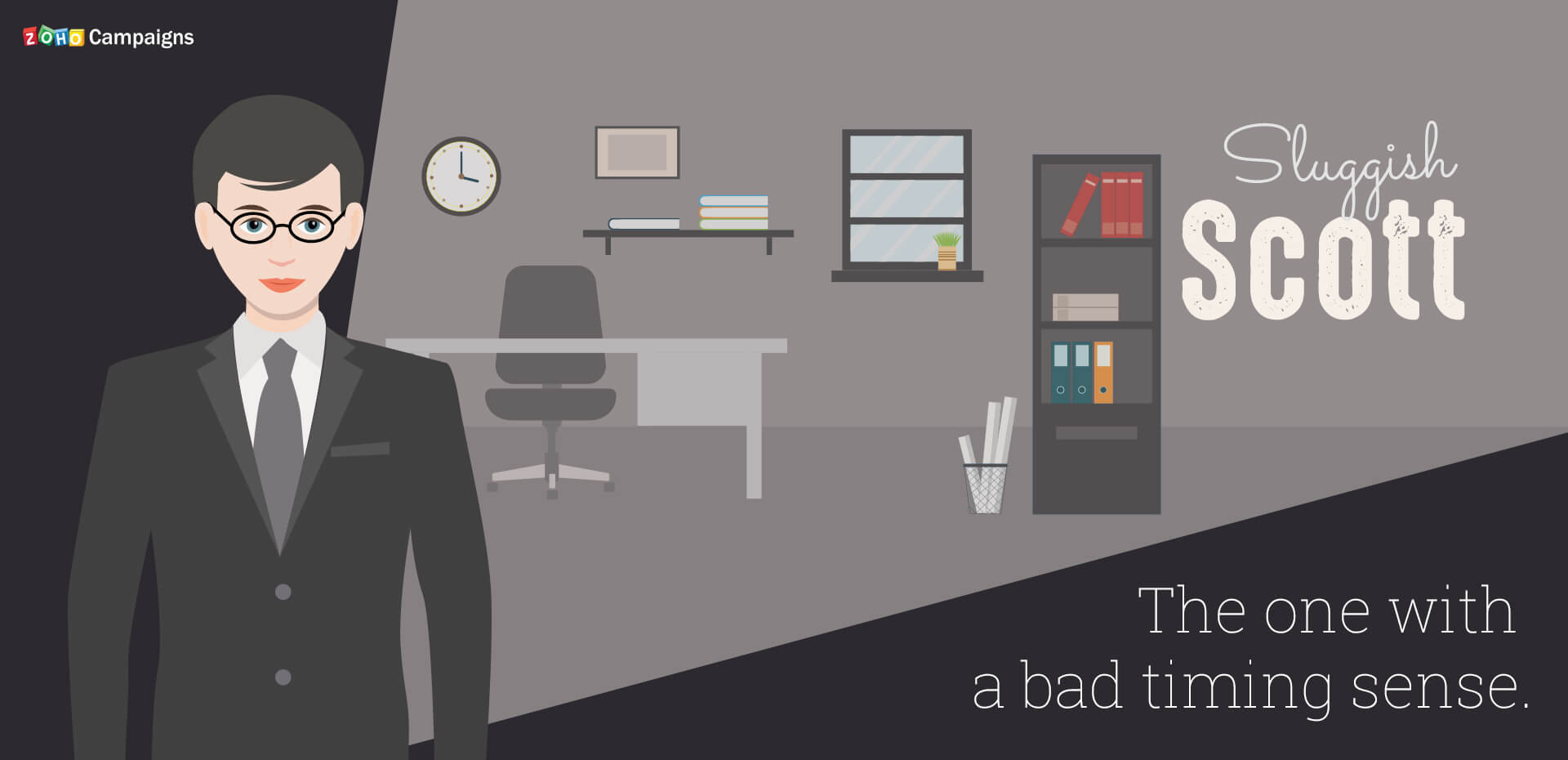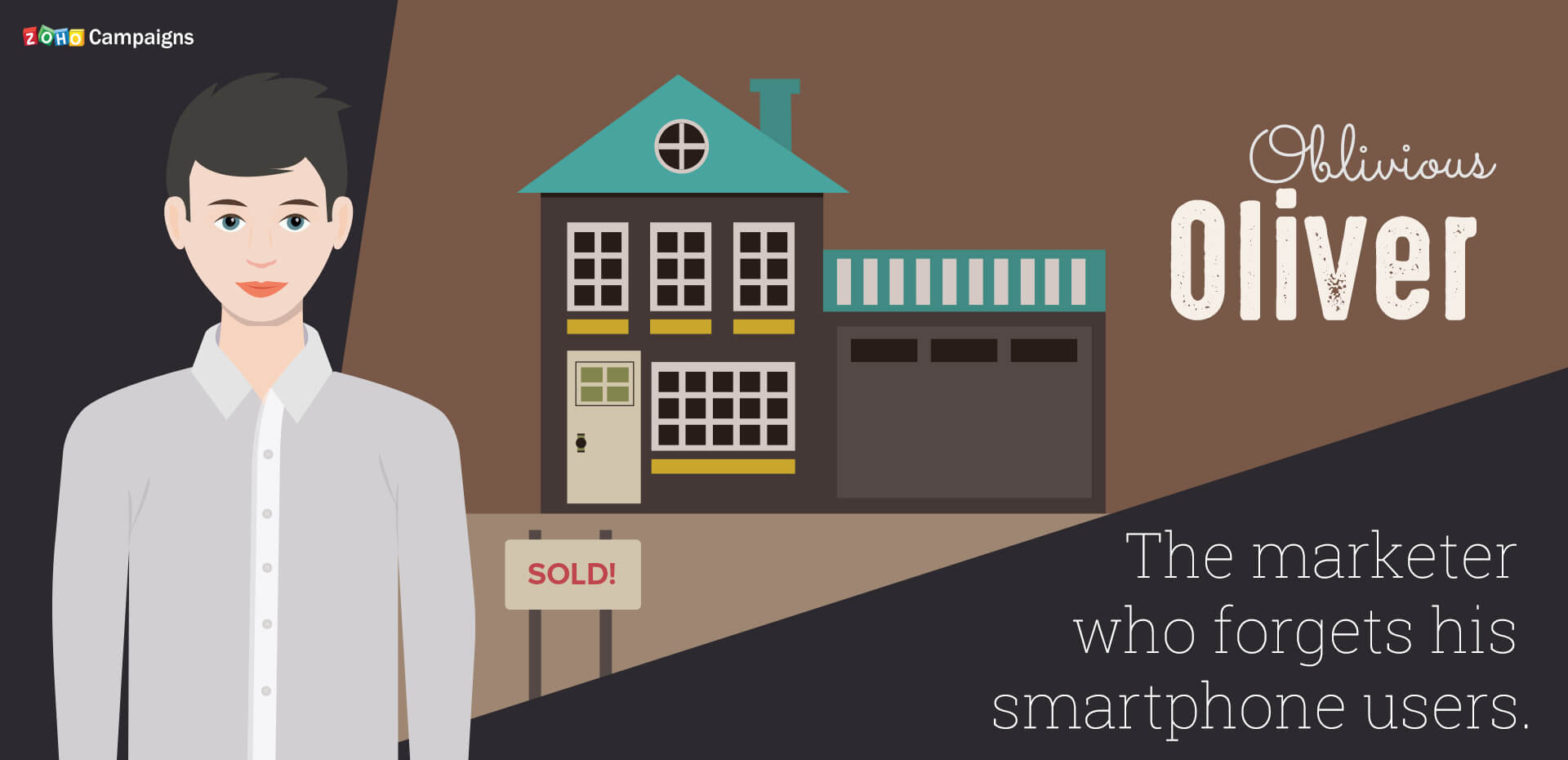Email marketing isn’t that difficult when done correctly. Few days back, we introduced you to four people who’ve made mistakes with their email marketing campaigns: the bookstore owner with a bad subject line, the gym equipment distributor who sends blast emails, the messy designer, and the confusing email marketer.
Now, here are the final three examples in this lesson on how not to do email marketing.
Meet “Oblivious” Oliver, the marketer who forgets his smartphone users.
Oliver is in the real estate business, and his firm has many projects coming up. At the end of a recently held annual real estate conference, he had a list of participants who were interested in his business. He wanted to convert these leads into full-time customers by engaging them from the very beginning. After obtaining the consent, he planned to send a series of lead nurturing emails with relevant information that would interest his leads.
After selecting a nice, but unresponsive template, Oliver designed his campaigns and sent them out. Unfortunately, because he never checked his emails on a smartphone, he didn’t understand how important it is to use a dynamic, responsive template. When his recipients received their emails, they could barely read them on their phones. Oliver’s emails, and his real estate deals went unnoticed.
Quick tip: Times have changed; the desktop era is over. Emails can be read easily on any portable device, including mobile phones, tablets, and laptops. There’s a good chance that your recipient is checking their messages on one of these devices, so make sure the templates you use for your campaigns are responsive. This will make sure that your emails look perfect when opened on any device, getting you more opens and clicks than usual.
Meet “Anonymous” Annie, the person without identity.

Annie works in a tech firm that uses email marketing to reach out to their customers. Her email campaigns provide subscribers with updates about the business, new releases, market growth, and more. She also uses email campaigns to get testimonial feedback about her company. She has to be in constant touch with all customers, so creating good content and scheduling campaigns are her core jobs. However, she keeps changing the email address that she uses for her campaigns.
Quick tip: When building relationships with your audience, your identity plays a major role. To earn your subscribers’ trust, it’s important to break your anonymity and let them know who you are in your emails. Both the sender address and the reply-to address should be valid and consistent for your recipients to contact you. If you keep changing your email address, it’s tough for your recipients to associate your message with your brand. Additionally, your signature forms a crucial part of your campaigns, and should never be missed. It shows that you are keen to convey information to your recipients, and they’ll instantly connect with you.
Meet “Sluggish” Scott, the auditor with a bad timing sense.

Scott runs an auditing business and has clients meet with him almost everyday. After their meetings, he keeps track of his clients and interacts with them through email campaigns. Since he started off as a small company, he was also promoting his business through email marketing, hoping to get more interested clients.
Scott doesn’t follow any particular schedule or plan, and he sends emails as and when he has to convey something. Due to his hectic schedule, he forgot to connect to some of his long-time clients, while concentrating solely on his new ones. Sometimes, he sends messages after long periods of silence, which makes him lose some potential clients. This has been happening for a while, and eventually, Scott’s business saw a decline. Now, he’s starting to realize his marketing efforts are going in the wrong direction.
Quick Tip: Consistency is a must when it comes to sending email campaigns and connecting with your subscribers. It’s necessary to keep your audience engaged with regular messages and updates. When your engagement is intermittent, your brand will fail to captivate your audience. It’s beneficial for you show consistency with periodically scheduled email campaigns.
Now that you’ve met these seven people, learn from their mistakes. Hopefully you have an idea on how email marketing shouldn’t be done and what steps you need to follow for your email campaign to be as successful as possible. Please share your experiences with us in the comments; we would love to hear what you’ve got to say.
If you’d like to read the first part of this blog, here’s the link:

